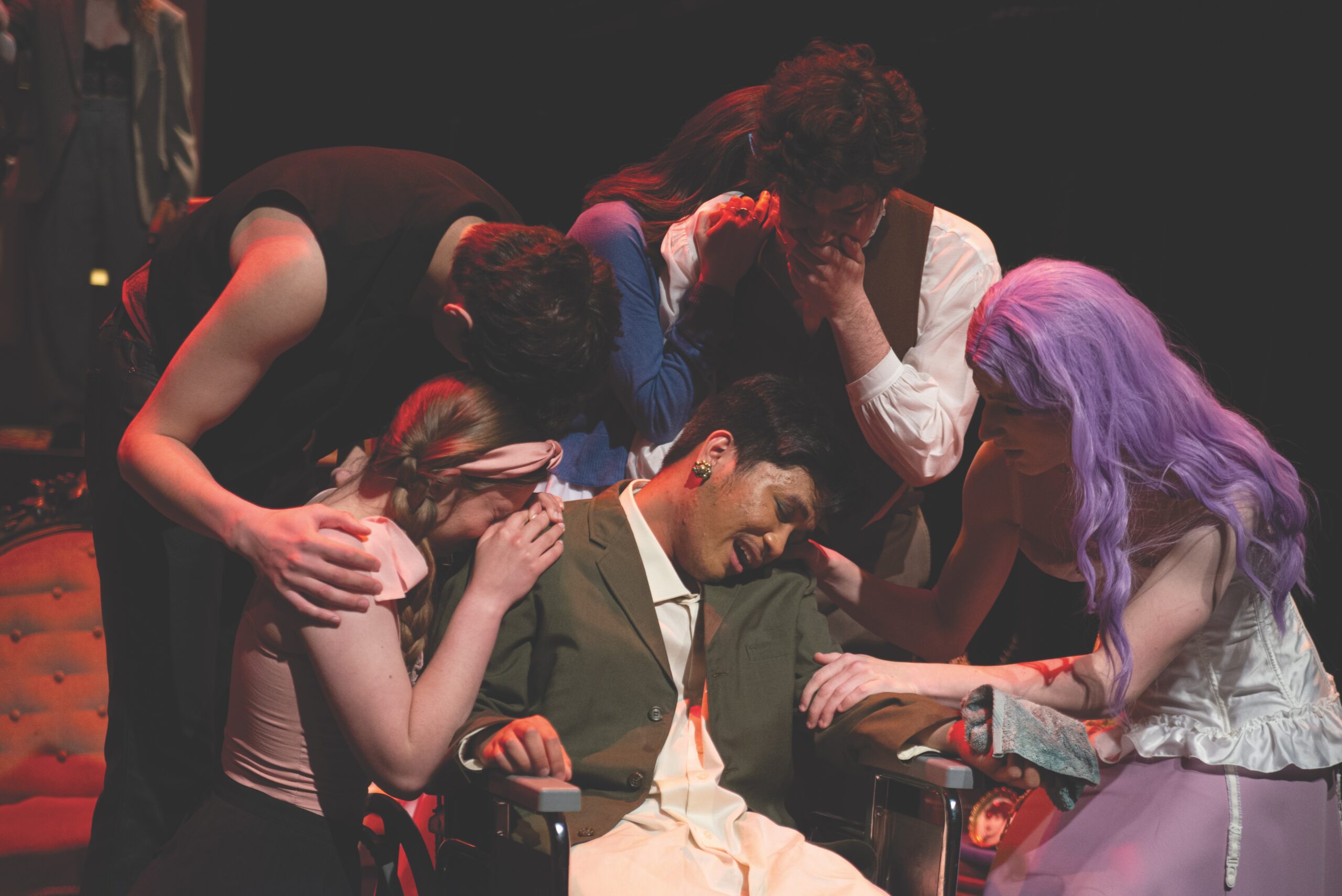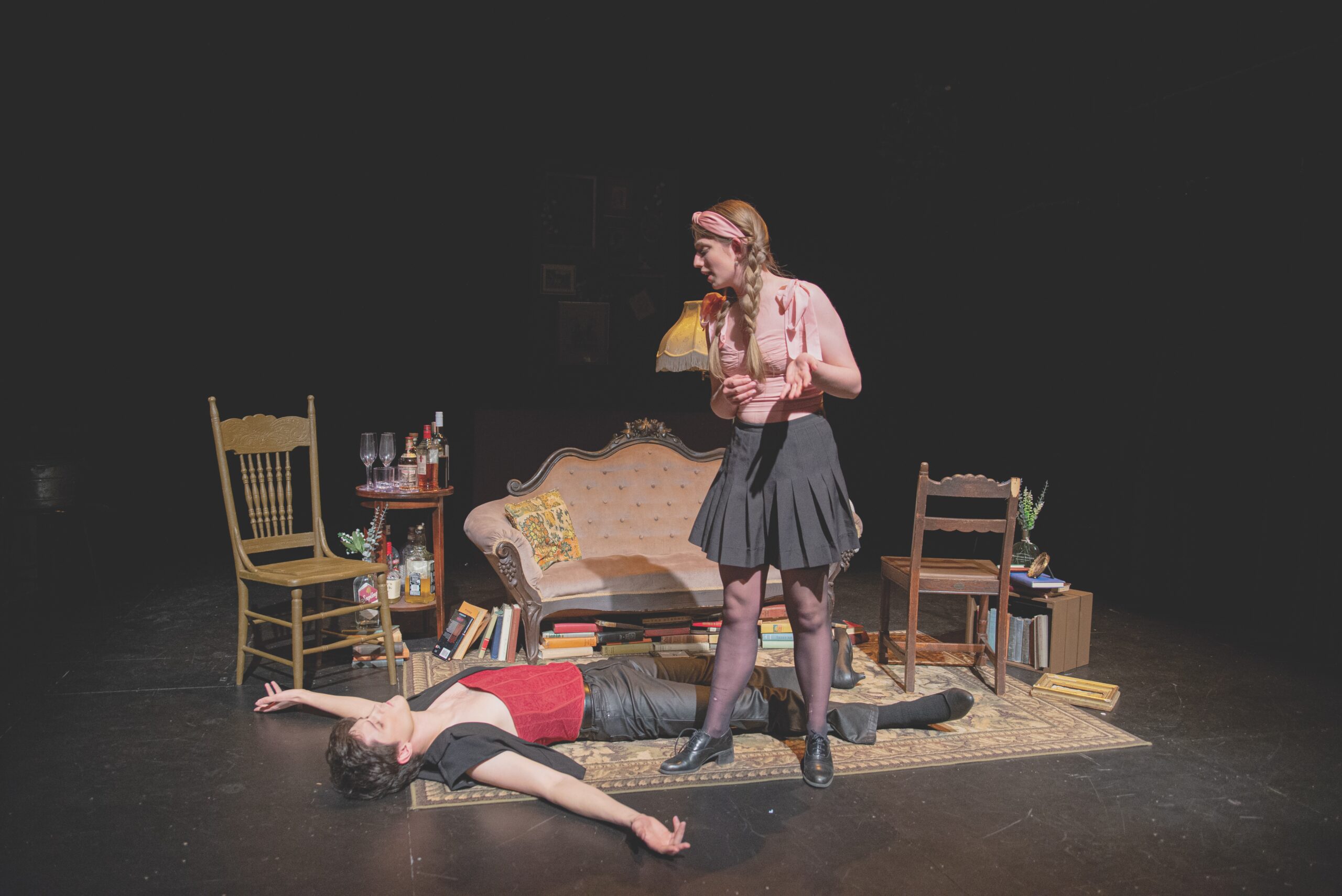Pickus ’25 and Masque & Gown challenge gender binary in spring play “Fefu and Her Friends”
April 19, 2024
“My husband married me to have a constant reminder of how loathsome women are.”
This is the eponymous character’s opening line of “Fefu and Her Friends,” put on by Masque and Gown, which premieres tonight at 7:30 p.m. in Wish Theater and will play again tomorrow at 2 p.m. and 7:30 p.m. This line was one of many in the 1977 play by Maria Irene Fornés that made Mira Pickus ’25 want to direct it after first reading it last fall.
“I read the opening line, and I was like, ‘Oh, that’s good, that’s delicious,’” Pickus said.
The play follows eight women, played by four women and four men, through an afternoon in Fefu’s home as they prepare for an education-related fundraiser. Focused more on dialogue than the plot, “Fefu and Her Friends” explores the women’s relationships and their search for individuality.
Pickus chose to cast actors of any gender, rather than just women, in part because she thought some of the play’s characters, such as Fefu, had personalities that did not fit neatly into one gender category.
“I was immediately drawn by Fefu…. She has both this acute femininity and these kind of domineering masculine qualities,” Pickus said. “She is the ringleader and facilitator of all these intimate female friendships, but she also shoots guns and does her own plumbing and has this weird complex about wanting to be a man and not liking women.”
Maiara Rebordao ’27, who plays Fefu while wearing a suit and black-laced corset, used a voice lower than her typical register and her physicality to embody these qualities.
“I’m always manspreading, because, yes, I’m a woman, but I’m also a very a masculine woman,” Rebordao said. “And when we’re screaming, I think, as women, we go a little higher on the pitch, but [Pickus] told me to bring my voice out more, so it sounds more deep, so that it’s more powerful and masculine.”
Ben Sachs ’26, who plays Sue, said the role required him to adopt a more self-contained demeanor.
“I think as a man, I’m apt to take up more space. But I’m playing a more reserved woman, so I try to cross my legs,” Sachs said. “But besides some of the physical aspects of it, it’s been more about trying to represent the character, rather than the gender.”
Sachs didn’t change his voice to make it sound higher or more feminine, nor did any of the male actors in the show.
“I think if I changed my voice, it would feel like a prop, like I was trying to be this woman who was very silly and fun and maybe she was a sorority girl,” Sachs said. “But that doesn’t really serve the play or the character. I think the language needs to come through in a way that the voice doesn’t feel like a prop for it.”
Pickus thought asking male actors to change their voice or body would undermine the purpose of casting male actors in the first place.
“They were all like, ‘Should we grow our hair out?’ and I was like, ‘No! I want your body the way it is. I don’t want you to change your voice,’” Pickus said. “What I think is effective about it is that [the male actors] are so compelling and effective in their characters. And why and how is that? How are they so believable as these people? And what does that say about masculinity and femininity?”
One of the characters, Julia, played by EJ Esmas ’27, has a physical and mental disability (though the exact nature of the disability is ambiguous) caused by a hunting accident. Pickus thought that the original play script’s portrayal of this disability “smelled of second-wave feminism” and required some rewriting.
“The character Julia has a disability … that’s supposed to be a very heavy-handed metaphor for the patriarchy crippling women [in the original script]. So that falls very flat, and we don’t want to use disability in that way,” Pickus said. “What was important to me was … to cut everything in the script that weakened her … lines like, ‘Julia whimpers,’ ‘Julia fends off fake punches.’”
Pickus also chose to take creative license in the play’s setting. Though the original version of the play took place in 1935, Pickus decided not to establish the time period during which her version of the play takes place, partly so she would not be constrained by the wardrobe of that time period.
“I wanted the costumes to be strange and modern in many places … so it didn’t make sense to do it [in the 1930s]…. People wouldn’t be wearing these sorts of colored, corseted costumes,” Pickus said. “I think not having a time period increases the sense of play, and it invites people to be in a non-realist place.”
Pickus resisted realism in other elements of the play too, especially the choreography.
“There are a lot of big exits that are highly choreographed to signal to the audience that you’re in a weird, fractured, liminal, camp place where a lot of spooky stuff is happening with gender,” Pickus said. “And I hope that invites the audience to be as playful with gender in their mind as we’re doing it onstage.”



Comments
Before submitting a comment, please review our comment policy. Some key points from the policy: